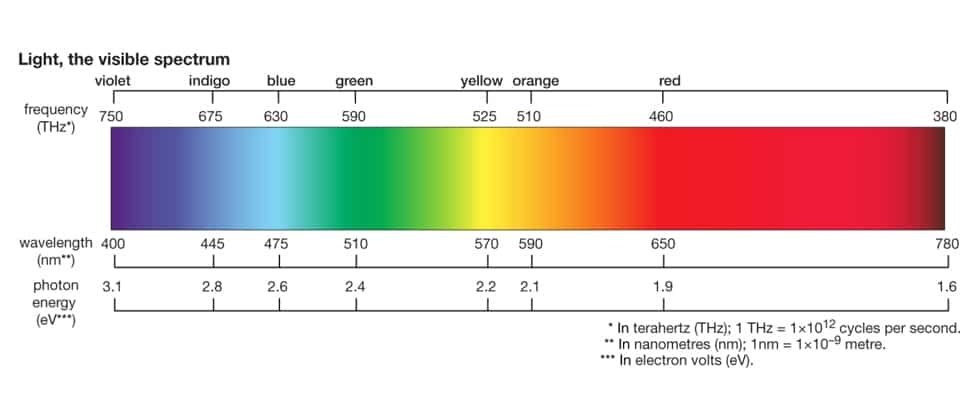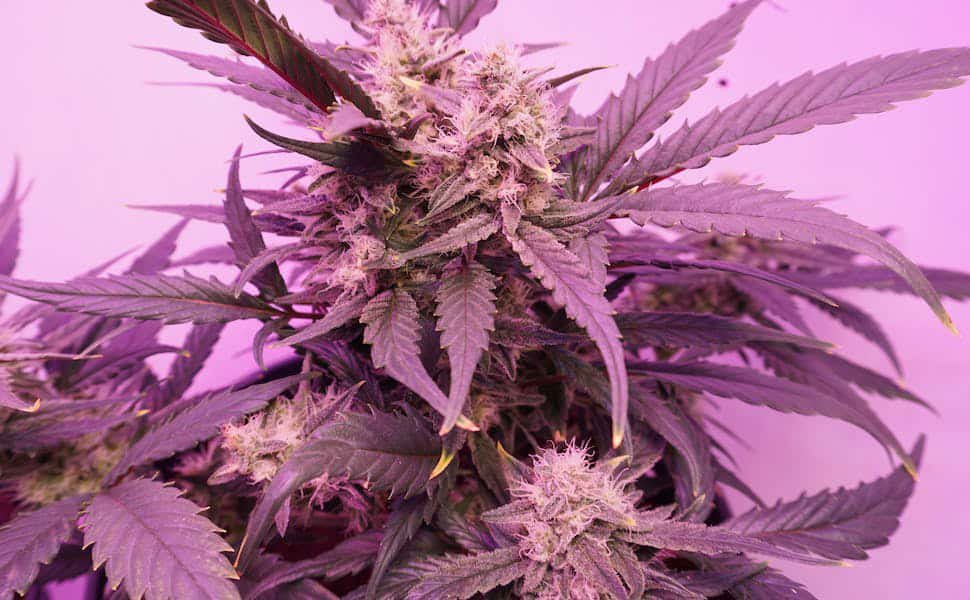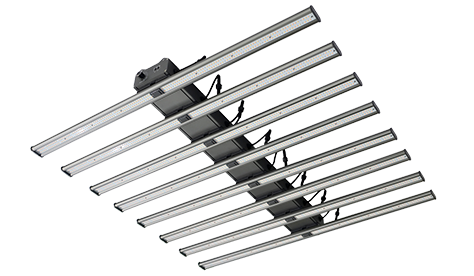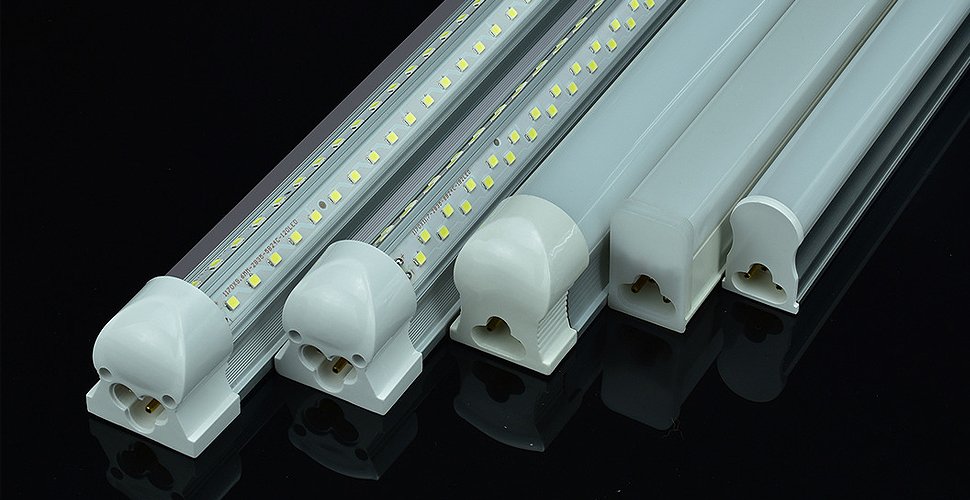Índice
Todos sabemos que a luz é fundamental para o crescimento das plantas. Talvez seja apenas uma compreensão literal unilateral, assim como alguns produtores novatos não conseguem entender por que suas plantas precisam de um tipo específico de luz colorida. Quando você começa a cultivar frutas, vegetais e outras plantas dentro de casa, você definitivamente quer use luzes LED de cultivo internas para ajudá-los a crescer melhor também.
Tentaremos explorar mais sobre as cores claras que as plantas precisam para obter luz neste artigo. para que você possa entender por que a combinação de comprimentos de onda azuis e vermelhos com pequenas quantidades de comprimentos de onda verdes, amarelos e infravermelhos ajuda a fotossíntese. Isso ajuda você a fazer uma escolha informada ao escolher a próxima lâmpada para cultivo de ervas daninhas em ambientes internos.

Por que as plantas crescem em direção à luz?
Você notou que as folhas novas da sua tartaruga estão se espalhando pela janela ou que uma determinada planta parece estar crescendo dentro de casa quando colocada? As plantas desenvolveram uma variedade de estratégias para capturar a maior quantidade de luz solar através de suas folhas.
Isso ocorre porque as plantas precisam de luz para realizar a fotossíntese. Se não tiverem acesso à luz de que necessitam no momento, naturalmente tentarão aproximar-se dela. Essa capacidade de crescer em resposta à luz é chamada de fototropismo.
Se uma semente germinar e se encontrar num local com pouca luz, ou se uma planta que já está a crescer descobrir que a quantidade de luz de que necessita é repentinamente reduzida, a planta reagirá de várias maneiras:
- O caule cresce mais sem deixar crescer folhas, na esperança de encontrar um local onde as folhas recebam luz suficiente.
- As folhas existentes ficam amarelas à medida que a planta retira o material que torna as folhas verdes para conservar energia até encontrar um ponto que justifique a produção de energia necessária para estabelecer a fotossíntese funcional.
- Se as novas folhas germinarem são pequenas e deformadas porque não têm material e energia suficientes para se desenvolverem adequadamente.

Não se limita apenas ao mundo vegetal, alguns fungos e bactérias também apresentam esse comportamento. O que há no “luz”? O que isso faz com o crescimento das plantas?
Cores diferentes fazem várias coisas
A luz usada pelas plantas para a fotossíntese é chamada radiação fotossinteticamente ativa e está no mesmo espectro das luzes de cultivo interno para ervas que podemos ver. As diferentes cores têm suas próprias tarefas a serem executadas. Da mesma forma, as plantas usam diferentes cores de luz para diversos fins.
- A luz azul deve ser usada no plantio de sementes e na primeira germinação. Isso ocorre porque a luz azul pode aumentar a quantidade de formação de clorofila.
- Quando as plantas amadurecem e começam a florescer, a luz vermelha e azul é importante, o que as ajuda a produzir mais folhas e melhores colheitas.
- A maior energia emitida pela luz violeta ajuda a realçar a cor das plantas, frutas e vegetais.

PuLuz simples (380-430nm): Em comparação com outras cores do espectro, o violeta tem o comprimento de onda mais curto, mas com energia relativamente alta.
Luz Azul (430-500nm): É uma das cores claras mais críticas para o crescimento das plantas.
Luz Verde (500-565nm): Penetra na copa superior espessa e sustenta as folhas da copa inferior.
Luz Amarela (565-580nm): O amarelo é a cor mais visível do espectro, mas é naturalmente a cor clara menos utilizada pelas plantas.
Luz Laranja (580-625 nm): Assim como o amarelo, o laranja é a cor mais visível do espectro e não contribui para o desenvolvimento das plantas.
Luz Vermelha (625-740nm): Assim como o azul, as plantas absorvem o vermelho para auxiliar na fotossíntese.
Vermelho distante (740-1050 nm): O infravermelho distante ou infravermelho (IR) é o comprimento de onda mais longo no espectro de luz visível.
Luz ultravioleta: A alta energia da radiação UV pode queimar plantas. No entanto, existem alguns benefícios no cultivo de cannabis.
Mas será que podemos ajustar ou aumentar a quantidade de luz que fornecemos para que as nossas plantas cresçam mais rapidamente e de forma mais saudável?
OA resposta é sim, e é exatamente por isso planta crescer luzes dentro de casa existir.
Se você quiser saber se as plantas crescem melhor à luz solar ou à luz artificial, estamos preparando um artigo inteiro sobre isso.
A melhor cor de luz depende de seus objetivos
Todas as plantas usam um espectro de cores diferente para seu ciclo de crescimento, desde a muda até a fase adulta, até a floração e a frutificação.
É por isso que as luzes LED de cultivo internas ideais diferem para cada estágio de crescimento. O espectro de cores ideal também depende do tipo de planta que você deseja cultivar.
Isso pode ficar muito complicado e só é importante para produtores comerciais que desejam maximizar os resultados. Em geral, as plantas apresentam melhor desempenho com todos os comprimentos de onda de luz. No entanto, não necessitam de quantidades iguais de luz, nem absorvem necessariamente toda a luz.
O que a luz roxa faz com as plantas?
Todas as plantas usam um espectro de cores diferente para seu ciclo de crescimento, desde a muda até a fase adulta, até a floração e a frutificação.
No espectro, o violeta tem o comprimento de onda mais curto, mas a energia é relativamente alta.
A maior energia emitida pela violeta ajuda a realçar a cor das plantas, frutas e vegetais. Combinado com a luz azul e vermelha, ajuda as plantas a adquirirem cor e aroma. Além disso, também ajuda a aumentar a quantidade de sabor e antioxidantes nos caules das plantas.

A luz azul ajuda as plantas a crescer?
O azul é uma cor fria e uma das cores claras mais críticas para o crescimento das plantas.
É prontamente absorvido pela clorofila na faixa de comprimento de onda curto entre 430-500nm. Embora seja uma cor clara eficaz para a fotossíntese, só é mais eficaz para o crescimento das plantas quando combinada com o vermelho.
Além disso, as plantas que absorvem a luz azul rapidamente são geralmente mais compactas e grossas, e as folhas verdes escuras impedem o crescimento de caules delgados.
A luz verde é boa para as plantas?
O verde é considerado a cor de luz menos eficaz para o crescimento das plantas. No entanto, os comprimentos de onda verdes penetram mais profundamente no fotorreceptor, enquanto outros comprimentos de onda não.
Eles podem ajudar as plantas a atingirem todo o seu potencial. Seus fotorreceptores vegetais responsáveis pela fotossíntese podem absorver um pouco de luz verde para um crescimento sustentado. Você deve ter uma pequena quantidade de luz verde no espectro.
Quão bem uma planta cresceria sob luz amarela?
A absorção do amarelo claro pelas plantas auxilia no processo de fotossíntese, mas pode não ajudar por si só. Mudas expostas apenas à luz amarela não produzem carboidratos e, portanto, não conseguem fotossintetizar para crescer.
A luz amarela tem um comprimento de onda de cerca de 550 – 600 nm. Existem dois tipos principais de clorofila nas plantas, nomeadamente clorofila a e clorofila b.
Orange Light é bom para plantas?
Junto com o amarelo, o laranja é uma das cores mais visíveis do espectro. Não ajuda muito as plantas no seu desenvolvimento. A maioria das plantas absorve a laranja rapidamente sem causar muitos danos, então você não precisa se preocupar em limitar sua ingestão.
A luz vermelha é boa para o cultivo de plantas?
As plantas absorvem principalmente o vermelho para ajudar na fotossíntese. No entanto, pode não ser eficaz por si só e pode ajudar melhor no crescimento eficaz das plantas quando combinado com luz azul. Usado em combinação com comprimentos de onda azuis, geralmente na faixa 5:1, faz maravilhas para aumentar folhas e flores.
A luz vermelha é muito eficaz na regulação do crescimento e desenvolvimento das plantas, auxiliando na floração e na frutificação e prolongando o período de floração. No entanto, as plantas cultivadas apenas sob luz vermelha podem desenvolver uma aparência esticada e alongada e folhas finas indesejáveis. O espectro geral das luzes LED para cultivo interno é principalmente luz vermelha combinada com luz azul.
As plantas gostam da luz vermelha distante?
Este é o comprimento de onda mais longo no espectro de luz visível.
Contribui para o processo de mudas ou germinação, onde a luz infravermelha sinaliza para as mudas iniciarem a germinação e encurta o tempo que as plantas levam para florescer. A luz vermelha distante também passa pela densa copa superior para apoiar o crescimento das folhas na parte inferior da planta.
Como a luz ultravioleta afeta as plantas?
Assim como os humanos são sensíveis à radiação UV, a luz UV também pode afetar as plantas. A alta energia da radiação UV pode queimar rapidamente as folhas e caules das plantas.
Mas a luz ultravioleta tem alguns benefícios. A exposição da cannabis à luz UV estimula a produção de resinas, óleos e antioxidantes protetores para proteger contra os raios nocivos, que proporcionam sabor adicional.
Muitos Fabricantes de lâmpadas LED para plantas estão agora desenvolvendo lâmpadas de cultivo interno de espectro completo com luz UV, projetadas especificamente para produtores de cannabis.
Conclusão
Não há uma resposta real para a questão de qual cor clara é mais adequada para o crescimento das plantas. Cada tipo de luz tem um significado próprio, todas podem ter um impacto positivo nas plantas em todas as fases de crescimento.
- A combinação de luz vermelha e azul é muito propícia ao bom crescimento das plantas.
- O efeito da luz azul nas plantas está diretamente relacionado à produção de clorofila. Ele controla o fluxo dos cloroplastos nas células e as plantas que recebem muita luz azul terão caules e folhas fortes e saudáveis.
- A luz vermelha é responsável por fazer com que as plantas floresçam e produzam frutos. Ajuda a aumentar a biomassa e também é essencial para o início da vida da planta para a germinação das sementes, crescimento das raízes e desenvolvimento do bulbo.
Jayes
Como gerente de marketing digital da AUXGROW, Jayes combina paixão por sistemas hidropônicos e experiência em luzes LED de cultivo. Com experiência prática e profundo conhecimento, Jayes guia você pelo mundo do cultivo sustentável.





